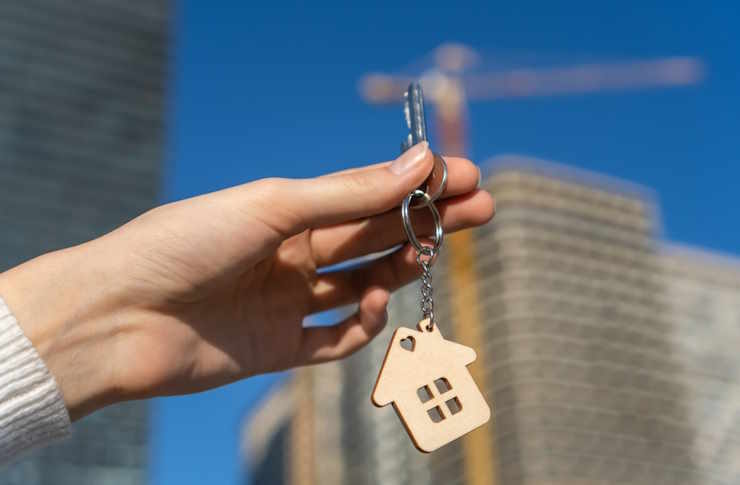New Housing Revolution: Why No-Deposit, Energy-Saving Apartments Are Taking Over
The rental housing market is experiencing a significant transformation as no-deposit, energy-efficient apartments gain unprecedented popularity. This innovative approach to urban living addresses two major pain points for modern renters: the financial burden of security deposits and the growing concern about energy consumption and sustainability. As cities expand and housing needs evolve, these forward-thinking rental options are reshaping expectations for what apartment living can offer.

The traditional rental market has long been characterized by substantial upfront costs and energy-inefficient buildings that burden tenants with high utility bills. However, a new wave of rental properties is disrupting this status quo, offering solutions that align with the financial realities and environmental consciousness of today’s renters. No-deposit, energy-saving apartments represent more than just a passing trend—they signal a fundamental shift in how we approach housing in urban environments.
What makes deposit-free apartments so appealing in 2025?
The elimination of security deposits addresses one of the most significant barriers to rental housing accessibility. Traditional security deposits—often equivalent to one or two months’ rent—can make moving financially prohibitive for many prospective tenants. Deposit-free apartments utilize alternative systems such as insurance-backed guarantees or monthly subscription fees that replace large upfront payments.
For renters, this means significantly reduced move-in costs, improved cash flow, and greater flexibility to relocate when necessary. Young professionals, in particular, benefit from these arrangements as they often change residences more frequently while building their careers. The appeal extends to landlords as well, who can attract a wider pool of qualified applicants and potentially reduce vacancy periods.
The deposit-free model has evolved significantly in recent years. While early versions simply replaced deposits with non-refundable fees, modern systems offer more sophisticated approaches that protect both tenant and landlord interests through third-party guarantors and transparent terms.
How do energy-saving buildings reshape modern city living?
Energy-efficient apartment buildings incorporate numerous technologies and design elements that dramatically reduce resource consumption. These include superior insulation, energy-efficient appliances, smart thermostats, solar panels, and advanced HVAC systems. Some developments even feature rainwater harvesting systems and green roofs that further reduce environmental impact.
The benefits extend beyond environmental considerations. Tenants in these buildings typically enjoy utility bills that are 30-50% lower than comparable conventional apartments. This creates a compelling financial incentive alongside the satisfaction of reducing one’s carbon footprint. The improved air quality and temperature regulation in these buildings also contribute to better health outcomes and comfort for residents.
Urban planners increasingly view energy-efficient residential buildings as essential components of sustainable city development. These structures help municipalities meet climate goals while creating more resilient communities that can better withstand energy price fluctuations and supply disruptions.
Where can renters find these next-generation apartments?
The availability of no-deposit, energy-saving apartments varies significantly by location, with certain markets leading the adoption of these innovative housing models. Major metropolitan areas with competitive rental markets—such as New York, San Francisco, London, Berlin, and Tokyo—have seen the most rapid expansion of these offerings, though the trend is spreading to mid-sized cities as well.
Digital platforms dedicated to sustainable and accessible housing have emerged to connect renters with these properties. Websites and apps now allow users to filter specifically for no-deposit options and energy efficiency ratings, making these apartments easier to find than ever before.
Purpose-built developments represent the most comprehensive implementation of these concepts, with entire buildings designed from the ground up to maximize energy efficiency while operating on deposit-free models. However, existing buildings are increasingly being retrofitted with energy-saving features and adopting flexible deposit alternatives to remain competitive.
How do these apartments impact rental economics?
The financial structure of no-deposit apartments typically involves alternative security arrangements. Instead of traditional security deposits, renters might pay a non-refundable fee (usually much smaller than a standard deposit) or subscribe to a monthly protection plan. These alternatives provide landlords with similar protections against damage or unpaid rent while reducing the financial burden on tenants.
For property developers and owners, the initial investment in energy-efficient features can be substantial. However, these costs are increasingly offset by government incentives, tax benefits, and the premium that environmentally conscious renters are willing to pay for sustainable housing. The long-term operational savings and reduced maintenance needs of high-efficiency buildings further strengthen the business case.
From an economic perspective, these properties tend to maintain higher occupancy rates and tenant satisfaction, resulting in reduced turnover—a significant advantage in competitive rental markets. This stability benefits both property owners and local communities.
What are the most popular no-deposit, energy-efficient apartment options?
Several providers have emerged as leaders in the no-deposit, energy-efficient apartment sector, each with distinctive approaches to addressing renter needs and environmental concerns.
| Provider | Deposit Alternative | Energy-Saving Features | Average Monthly Premium |
|---|---|---|---|
| Rhino | Insurance-backed security | N/A (partners with various properties) | $5-15 per month |
| Jetty | Deposit replacement insurance | N/A (partners with various properties) | $15-25 per month |
| Obligo | Credit-based deposit alternative | N/A (partners with various properties) | One-time fee of 2.5% of deposit amount |
| Avalon Bay Communities | Traditional or reduced deposit options | LEED certification, smart home features | $0-50 premium on monthly rent |
| Equity Residential | Security deposit alternatives | Energy Star appliances, efficient HVAC | $25-75 premium on monthly rent |
Prices, rates, or cost estimates mentioned in this article are based on the latest available information but may change over time. Independent research is advised before making financial decisions.
What does the future hold for rental housing innovation?
The trajectory of the rental housing market suggests continued growth for no-deposit, energy-saving apartments. As climate concerns intensify and housing affordability remains a challenge in many regions, these innovations address pressing needs for both tenants and society at large.
Technological advancements will likely enhance the energy efficiency of future developments even further. Emerging technologies such as advanced building materials, next-generation solar integration, and more sophisticated energy management systems promise to push the boundaries of what’s possible in sustainable housing.
Regulatory environments are also evolving to encourage these housing models. Many municipalities now offer incentives for green building practices, while some jurisdictions are implementing regulations that limit security deposit amounts or require alternatives, further accelerating the adoption of no-deposit options.
The convergence of environmental consciousness, financial accessibility, and technological innovation points toward a rental housing future where no-deposit, energy-saving apartments become the norm rather than the exception. This shift represents a positive development for renters seeking more affordable, sustainable living options in increasingly dense urban environments.




